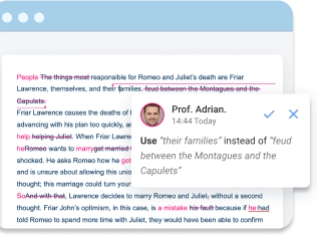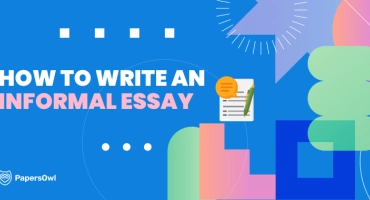50+ Types of Tone in Writing with 100+ Examples & 75 Tone Words
Table of contents
- 1 A Simple Definition of Tone in Writing
- 2 Why Is Tone Important?
- 3 What Are Different Types of Tones?
- 3.1 1. Formal Tone
- 3.2 2. Informal Tone
- 3.3 3. Optimistic Tone
- 3.4 4. Pessimistic Tone
- 3.5 5. Serious Tone
- 3.6 6. Humorous Tone
- 3.7 7. Encouraging or Friendly Tone
- 3.8 8. Sarcastic or Ironic Tone
- 3.9 9. Persuasive or Assertive Tone
- 3.10 10. Objective or Neutral Tone
- 3.11 11. Subjective Tone
- 3.12 12. Critical Tone
- 4 Positive, Negative, and Neutral Tones
- 5 List of Common Tone Words
- 6 How to Identify and Use Various Types of Tone in Writing?
- 7 Examples of Various Tones
- 8 Final Thoughts
Tone in writing works like tone in speech. It tells the reader if you are serious, humorous, or sarcastic. Instead of voice, it shows through words and structure.
Indeed, the message can feel rude or distant if the writing style doesn’t fit. Thus, choosing the right tone allows readers to understand and connect with your text!
In this guide, we’ll explore over 50 types of tone with concise explanations, examples, and practical advice. You’ll also see a large list of tone words divided into positive, neutral, and negative categories. If you ever feel overwhelmed with an assignment and want to hire someone to do assignment, mastering tone will help you better communicate your ideas through the work you submit.
If you are working on essays, emails, stories, or reports, knowing how to control how you express your ideas will help you connect with your audience.
A Simple Definition of Tone in Writing
Tone refers to the attitude or feeling a writer shows toward the subject and the audience. It is not only what you say but also how you say it.
The same message can sound polite, rude, cheerful, or angry depending on how you express ideas in your text. In other words, tone reflects the writer’s emotions, opinions, or neutrality.
It can be formal, informal, optimistic, pessimistic, serious, or humorous. This is one of the key stylistic elements that shape how a written piece is received. When used well, it makes readers feel connected and engaged. When used poorly, it can confuse or even push readers away.
Tone vs. Mood vs. Voice
- Tone: a specific attitude (serious, humorous, optimistic, pessimistic, etc.) that writers convey in their messages.
- Mood: the emotional response created in the reader (sad, hopeful, tense, amused). Tone creates mood.
- Voice: the unique style of the writer, based on word choice, sentence rhythm, and overall tone.
What is a tone words? Think of it this way: tone is what the writer feels, mood is what the reader feels, and voice is the personality behind the words.
Example of Various Tones
Let’s take the same idea — canceling a meeting — and express it in different tones:
- Formal tone: “We regret to inform you that the meeting scheduled for Monday has been postponed.”
- Informal tone: “Hey, the Monday meeting is off. We’ll pick a new date soon.”
- Sarcastic tone: “Wow, another meeting canceled. Shocking.”
- Optimistic tone: “The meeting is delayed, but this gives us more time to prepare and share better ideas.”
See how the same message changes depending on tone? The words we choose and the style we use make all the difference.
Why Is Tone Important?
The overall manner of writing shapes how readers understand and respond to a text. Tone is not just decoration. It directly affects communication.
Picking the right tone differentiates between clear, respectful writing and confusing or rude words.
Key Reasons Tone Matters
- It reflects attitude. Readers sense if you are confident, respectful, doubtful, or impatient. For example, a positive tone can motivate, while a harsh manner may discourage.
- It builds trust. A formal style shows authority and professionalism. A warm, friendly manner builds closeness and makes writing approachable.
- It improves clarity. A consistent writing tone helps readers follow your message. Sudden changes in tone distract or confuse.
- It guides emotions. An inspirational tone makes readers hopeful. A somber tone reflects a heavy or sad mood.
Right and Wrong Tone Examples in Writing
| Situation | ✅ Right Tone | ❌ Wrong Tone |
| Email to a teacher | “Thank you for your feedback. I’ll work on the corrections.” (respectful) | “Well, I guess I’ll fix it if I have time.” (dismissive) |
| Customer service reply | “We value your patience as we solve the issue.” (polite, caring) | “Stop asking, we’ll fix it when we can.” (aggressive) |
| Text to a friend | “Can’t wait to see you later!” (excited, friendly) | “I’ll come if I feel like it.” (cold, distant) |
| Job application letter | “I am very interested in this position and look forward to contributing my skills.” (professional) | “I really need this job, please give me a chance.” (desperate) |
| Group project message | “Let’s meet tomorrow to finish the slides. Thanks for your teamwork!” (encouraging) | “If you don’t show up, don’t bother being part of this project.” (hostile) |
| Social media post | “So grateful for everyone who helped today!” (positive) | “Nobody ever helps me, as usual.” (negative) |
Tone is not only about style. It shows respect for the reader and builds trust between the writer and the audience. A good tone also makes the message clear and easy to follow. The right tone creates connection, while the wrong one causes confusion or even offense.
What Are Different Types of Tones?
Tone in writing can take many forms. It reflects the writer’s attitude and shapes how readers feel. Different tones express emotions, perspectives, and intentions. Picking the right voice helps your writing feel clear, engaging, and appropriate for your audience.
Below are the 12 most common types of tone, with definitions, examples, and advice on when to use them.
1. Formal Tone
A formal tone sounds serious and professional. It avoids casual words, contractions, or slang. Instead, it uses correct grammar, precise wording, and a respectful style. This style makes your writing feel trustworthy and polished.
Examples:
- “The results of this study confirm a significant correlation between diet and cognitive performance.”
- “We kindly request your presence at the annual meeting.”
- “The policy changes were implemented to ensure compliance with international standards.”
Use in: Research papers, academic essays, business reports, or official speeches.
A formal tone is appropriate when you want to demonstrate professionalism and authority. It helps your audience trust your message and take it seriously.
2. Informal Tone
An informal tone feels relaxed and friendly, like chatting with someone you know. It may use contractions, casual phrases, or even jokes. This style makes the writing approachable and easy to read.
The following 4 types of sentences are good examples of informal style.
Examples:
- “Hey, what’s up? Haven’t seen you in forever!”
- “This pizza is amazing – I could eat it every single day.”
- “Don’t stress, you’ve totally got this.”
- “I was late because my dog decided today was the perfect day for a nap in the middle of the sidewalk.”
Use in: Blogs, social media posts, personal essays, and everyday communication.
An informal tone works well when you want to connect with readers personally. It makes your text sound more natural and relatable.
3. Optimistic Tone
An optimistic tone is bright, hopeful, and full of positive energy. It focuses on opportunities and good outcomes. It encourages readers and leaves them feeling motivated.
Examples:
- “With new medical advances, we have a real chance to cure many diseases.”
- “The economy is slowly improving, which gives small businesses hope.”
- “Hard work pays off, and your effort will lead to success.”
Use in: Motivational writing, speeches, blogs, or self-help guides.
An optimistic manner of writing inspires readers and gives them confidence. It works well when you want to uplift people and create a positive atmosphere.
4. Pessimistic Tone
A pessimistic tone leans toward doubt and worry. It highlights problems, risks, or negative outcomes. Writers use this example of tone in a sentence to stress challenges and warn readers.
Examples:
- “Despite years of effort, the healthcare system continues to fail millions of people.”
- “The lack of preparation makes success in this project unlikely.”
- “Climate change is moving faster than our solutions.”
Use in: Opinion pieces, critical essays, or articles about challenges.
A pessimistic tone helps readers see dangers or flaws that shouldn’t be ignored. It can create a somber mood that encourages careful thinking and a more realistic view of problems.
5. Serious Tone
A serious tone focuses on important issues without humor or distraction. It shows responsibility and signals that the topic deserves attention. Readers immediately know that the subject is weighty.
Examples:
- “The destruction of rainforests threatens biodiversity and climate stability worldwide.”
- “Every citizen must understand the risks of ignoring health guidelines.”
- “War leaves lasting scars on entire generations.”
Use in: Academic writing, reports, and sensitive topics.
A serious tone works when humor would feel out of place. It builds trust and shows respect for the issue’s importance.
6. Humorous Tone
A humorous tone uses jokes, irony, or exaggeration to entertain readers. It makes writing playful and fun, even when the topic is serious. Humor can grab attention and make people want to keep reading.
Examples:
- “I tried cooking dinner, but the smoke alarm had other plans.”
- “My dog thinks he owns the house—I just pay the bills.”
- “Exams are like alarm clocks: nobody likes them, but they keep us on track.”
Use in: Blogs, satire, creative essays, or lighthearted novels.
Humorous examples of tone in writing make content enjoyable and easy to remember. It works best for informal topics or when you want to add personality.
7. Encouraging or Friendly Tone
A friendly tone feels warm and supportive. It reassures readers, motivates them, and creates a sense of connection. Writers often use it to guide or comfort their audience.
Examples:
- “Don’t worry if you make mistakes – every writer improves with practice.”
- “You’ve already made progress. Keep going and you’ll reach your goal.”
- “We’re here to help you every step of the way.”
Use in: Guides, educational content, self-help, and coaching texts.
A friendly tone builds trust and makes readers feel cared for. It’s great for explaining difficult things in a gentle, supportive way.
8. Sarcastic or Ironic Tone
A sarcastic tone uses humor mixed with exaggeration or mockery. It often points out flaws in a funny or biting way. While it can be entertaining, it needs to be used with care.
Examples:
- “Oh great, another traffic jam – just what I needed.”
- “Of course, leaving everything to the last minute always works out perfectly.”
- “Wow, what a genius plan – to start the hardest part first.”
Use in: Satire, opinion pieces, or informal blogs.
Sarcasm entertains while criticizing. It works when your audience understands the humor, but it can easily offend if taken the wrong way.
9. Persuasive or Assertive Tone
A persuasive tone tries to change someone’s mind. An assertive manner feels confident and strong. Both are used to make writing more convincing and impactful.
Examples:
- “Every student deserves free access to textbooks. Education is a right, not a privilege.”
- “Now is the time to act on climate change.”
- “Join us and be part of real change.”
Use in: Essays, speeches, ads, and campaigns.
A persuasive or assertive tone strengthens arguments and inspires action. It works best when you need to win support, sell an idea, or motivate people to do something.
10. Objective or Neutral Tone
An objective tone sticks to facts without personal feelings. It avoids opinions and focuses only on evidence. This makes the writing clear, fair, and balanced.
Examples:
- “The unemployment rate fell by 2% in the past year.”
- “The test showed no measurable difference between the two groups.”
- “Revenue increased steadily in the last quarter.”
Use in: Research, reports, and news writing.
An objective tone is best when accuracy and fairness matter most. It lets readers decide for themselves based on facts rather than opinions.
11. Subjective Tone
A subjective tone shares the writer’s personal thoughts, feelings, or experiences. It makes writing more emotional and relatable. Readers often connect with it because it feels human and real, even if passive voice construction is sometimes used to express personal impressions more softly.
Examples:
- “I found the documentary moving and unforgettable.”
- ‘I was deeply moved by the way the story was told.”
- “I believe this novel captures the struggles of growing up.”
Use in: Reviews, personal essays, and creative writing.
A subjective tone works when you want to share your perspective and connect emotionally. It makes your writing unique and personal.
12. Critical Tone
A critical voice examines strengths and weaknesses closely. It doesn’t just describe — it evaluates and judges. This type of tone helps readers think more deeply about a subject.
Examples:
- “The book fails to develop strong characters and offers little originality.”
- “The film has beautiful visuals but a predictable plot.”
- “The policy brings short-term benefits but ignores long-term risks.”
Use in: Reviews, critiques, and academic essays.
A critical tone in writing adds depth and shows analysis. It gives readers reasons to agree or disagree and helps them understand an issue’s pros and cons.

Positive, Negative, and Neutral Tones
Writers can express themselves in many different voices, but most styles fall into three main groups: positive, negative, and neutral. Each serves a purpose and works best in certain situations.
The words you choose, how you shape sentences, and how you share ideas create a mood. Readers can quickly feel if your message is warm, hopeful, sharp, or distant.
If you have ever wondered “What is tone in writing?”, it simply means the specific word choices that set the mood and attitude in a text. Learning how these choices work makes creating essays that readers can understand and trust easier.
In the next section, you’ll see how these three categories appear in practice, along with examples that show them in real writing.
Tone Categories
| 😊 Positive | 😡 Negative | 😐 Neutral |
| Optimistic | Critical | Objective |
| Encouraging | Sarcastic | Informative |
| Friendly | Pessimistic | Balanced |
| Joyful | Angry | Serious |
| Humorous | Accusatory | Formal |
| Romantic | Cynical | Reflective |
| Respectful | Bitter | Analytical |
| Hopeful | Fearful | Curious |
| Cheerful | Disappointed | Descriptive |
| Playful | Aggressive | Narrative |
| Inspirational | Frustrated | Explanatory |
| Affectionate | Annoyed | Detached |
| Confident | Mocking | Observational |
| Supportive | Judgmental | Concerned |
| Motivational | Resentful | Thoughtful |
| Loving | Suspicious | Cautious |
Positive Tones
Positive writing carries warmth, encouragement, or joy. It makes the text uplifting and pleasant to read. Writers use it to inspire, motivate, or show care. This style often appears in blogs, speeches, self-help books, personal letters, or even ads that want to create trust.
A positive voice helps readers feel supported. It builds a connection between the writer and the intended audience. Instead of pointing out flaws, it highlights strengths. Instead of discouraging, it motivates. Readers walk away with more hope and energy.
Key Features of Positive Writing:
- It uses kind and uplifting words.
- It often includes encouragement and praise.
- It creates a friendly or joyful mood.
- It can inspire readers to take action or feel cared for.
Examples:
- Optimistic: “Tomorrow brings new chances.”
- Encouraging: “Mistakes help you grow.”
- Friendly: “Hey, glad you’re here!
- Joyful: “I can’t stop smiling today.”
- Inspirational: “Your ideas can change the world.”
- Respectful: “I truly appreciate your effort on this project.”
- Supportive: “You don’t have to do it alone. I’m here for you.”
- Cheerful: “The sun is shining, and it feels like a fresh start.”
- Hopeful: “There’s always a way forward, even if the road is tough.”
- Admiring tone: “Your dedication is truly inspiring – I look up to you.”
Positive voices are powerful because they encourage trust. For example, a teacher might write in a classroom email, “I’m proud of your progress so far. Keep pushing forward.” That small note of support motivates students to keep going.
Another use is in customer service. A polite reply like, “Thank you for your patience as we solve this issue. We appreciate your understanding,” makes readers feel respected, not dismissed.
Overall, positive writing is about lifting people. It is one of the most effective ways to connect through words.
Negative Tones
Negative writing refers to a style that expresses frustration, criticism, or doubt. It can sound angry, sarcastic, or pessimistic, sometimes feeling sharp or cold. Writers often use this style to highlight problems, call out mistakes, or push readers to notice flaws.
Negative voices are common in reviews, debates, critiques, and opinion articles. They can be risky because they may hurt or discourage readers. But if used carefully, they are powerful tools. They bring attention to real issues and make readers stop and think.
Key Features of Negative Writing:
- It points out flaws, risks, or mistakes.
- It often uses strong or sharp words.
- It may sound critical, doubtful, or angry.
- It can create a serious or urgent mood.
Examples:
- Critical: “The book lacks originality.”
- Sarcastic: “Perfect timing as always.”
- Pessimistic: “Nothing will ever change.”
- Angry: “I’m fed up with this!”
- Cynical: “They only care about money.”
- Judgmental: “This plan shows a lack of real effort.”
- Disappointed: “I expected much better results than this.”
- Frustrated: “No one seems to be listening.”
- Aggressive: “You’ve completely failed to deliver.”
- Bitter: “Others always get ahead, no matter how hard I try.”
Although these types of writing tones sound harsh, they serve important purposes. For example, a critical review might point out weak arguments in a research paper. A cynical essay might question unfair systems in society.
Consider this sentence: “Politicians promise change, but nothing ever happens.” It’s pessimistic, but it highlights the distrust many readers might share. That makes the message persuasive, even if it’s negative.
Negative writing works best when the goal is to challenge, warn, or demand attention. Used wisely, it can be just as effective as positive writing.
Neutral Tones
Neutral writing is calm, balanced, and factual. It avoids strong emotions and focuses on clarity. The goal is not to persuade or criticize but to explain, describe, or report information.
Neutral tones are common in academic writing, research, manuals, reports, and official documents. Readers expect these texts to stay objective and free of bias.
A neutral voice is helpful when accuracy matters more than emotion. It allows readers to focus on facts without being influenced by the writer’s feelings.
Key Features of Neutral Writing:
- It relies on facts and data.
- It avoids strong emotional words.
- It is often formal and serious.
- It focused on explaining, not persuading.
Examples:
- Objective: “The temperature dropped by 5 degrees overnight.”
- Informative: “Water boils at 100 degrees Celsius at sea level.”
- Serious: “Deforestation has long-term effects on the climate.”
- Analytical: “The data suggest a link between sleep and productivity.”
- Reflective: “Looking back, I realize I could have handled it differently.”
- Descriptive: “The building has tall glass windows and a marble floor.”
- Technical: “The device requires a 12-volt battery to function.”
- Professional: “Please submit your report by Monday morning.”
- Straightforward: “The meeting will begin at 9 a.m. sharp.”
- Moderate: “Some progress was made, though challenges remain.”
Neutral tones are reliable. For example, a science article might say, “The experiment confirmed the hypothesis,” without adding excitement or disappointment.
In business, a manager might write, “Our quarterly earnings increased by 12%,” which is factual and professional. No emotion, just information.
Neutral writing helps readers trust the content. It is best for academic essays, reports, or situations where facts matter more than feelings.
List of Common Tone Words
Tone words are the key to showing how a piece of writing feels. They help answer the question “What are different tones in writing?” and make it easier to notice the writer’s attitude. These words tell the reader whether the message is warm, serious, playful, or harsh.
For example, “I’m so proud of you” sounds supportive, “This must be done immediately” feels demanding, and “What a wonderful surprise!” is cheerful.
Learning such words makes it easier to spot emotions in writing and choose the right style in your work. Whether you’re creating an essay, a story, or even a short email, these words guide the mood and make the message clear.
Below is a list of common tone words. They are grouped into positive, neutral, and negative categories to make them easier to understand and use in writing.
| Positive | Admiring, affectionate, appreciative, cheerful, compassionate, confident, cooperative, encouraging, enthusiastic, excited, friendly, hopeful, humorous, inspirational, joyful, light-hearted, loving, optimistic, passionate, proud, respectful, supportive, sympathetic, warm. |
| Neutral | Academic, analytical, candid, casual, conversational, curious, detached, direct, factual, formal, informative, neutral, objective, professional, reflective, serious, sincere, straightforward, technical, thoughtful, moderate. |
| Negative | Abrasive, aggressive, angry, annoyed, arrogant, bitter, bossy, cold, condescending, critical, cynical, dark, defensive, demanding, disapproving, disrespectful, frustrated, harsh, ironic, irreverent, judgmental, mocking, pessimistic, resentful, sarcastic, somber, tense, overly concerned. |
How to Identify and Use Various Types of Tone in Writing?
Many small choices shape our writing. These choices decide whether the message feels formal, casual, emotional, or neutral. Readers often notice these signals even before they finish the first paragraph.
The style in writing defines the use of several elements:
- Word choice matters a lot. Formal writing uses precise and professional words. An informal tone refers to using slang, everyday phrases, or even jokes.
- Sentence structure also plays a role. Long, complex sentences can sound formal or academic, while short and simple ones feel casual and direct.
- Punctuation adds emotion. An exclamation mark can make a sentence sound exciting or urgent. A neutral manner usually sticks with plain periods.
- Point of view shapes how personal or distant the writing feels. The first person often shows a personal perspective, while the third person feels more objective and neutral.
Practical Tips for Students
- Essays: Keep a consistent tone. Avoid informal language and support ideas with logical reasoning.
- Emails: Match tone to your audience. A friendly manner works for classmates. A formal style is better for teachers.
- Creative writing: Experiment with various ways of expressing your thoughts. Try humorous, sentimental, or ironic voices. Notice how each one changes the mood of the piece.
- Opinion pieces: Use an assertive manner. At the same time, choose respectful words so your argument sounds balanced.
Examples of Various Tones
Let’s look at tone examples sentences to understand better how they work. These short samples show how the same topic can differ depending on the writer’s attitude.
A message about healthy eating can sound serious, funny, encouraging, or even sarcastic. Each tone changes the mood and shapes how the reader reacts.
Topic – Healthy Eating:
- Serious: “A balanced diet is vital for long-term health.”
- Humorous: “If salad could talk, it would beg for a slice of pizza to keep it company.”
- Sarcastic: “Oh yes, because broccoli is everyone’s favorite snack.”
- Encouraging: “Start small. Even one healthy meal a day makes a difference.”
- Critical: “Modern diets ignore the importance of natural, unprocessed food.”
- Optimistic: “With better food choices, people can feel more energy and live longer.”
- Pessimistic: “No matter how hard we try, junk food will always win.”
- Friendly: “Hey, have you tried adding fresh fruit to your breakfast? It tastes amazing.”
- Inspirational: “Your health is your greatest investment. Nourish it with good food.”
- Casual: “Grab an apple instead of chips – it’s quick, easy, and way better for you.”
- Informative: “Fruits and vegetables provide essential vitamins that support the immune system.”
- Motivational: “Every healthy choice you make today takes you one step closer to your goals.”
- Worried: “Too much fast food can seriously harm your body over time.”
- Playful: “Carrots may not make you fly, but they’ll give you superhero-level vision.”
- Respectful: “Many cultures value fresh, whole foods as part of their tradition and health.”
- Direct: “Cut back on sugary drinks if you want to stay healthy.”
- Reflective: “Looking back, I realize that eating better changed not only my body but also my energy.”
These examples show how much the delivery matters. The same topic – healthy eating – can sound lighthearted, professional, or emotional depending on the words and style.
Practicing with different tones makes choosing the right voice for essays, stories, or even everyday communication easier.
Final Thoughts
So, tone is what makes writing come alive. In the same way, body language changes spoken words, writing style reflects emotions and attitudes in a text. By learning to control voice in writing, you can shape how readers feel and what they remember.
There are endless possibilities for writing manners. You can use a formal style to sound professional, an informal manner to feel friendly, or even be sarcastic to add humor or critique. Try rewriting the same paragraph in various tones – serious, humorous, optimistic, or pessimistic. Notice how the meaning and emotional impact shift.
Understanding tone improves your texts and helps you notice the writer’s attitude in books, essays, and creative writing. This is a powerful tool. So, use it wisely!








